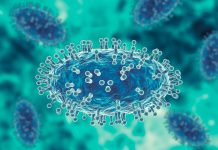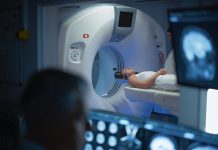Amidst a stark rise in US syphilis cases, researchers have secured a $2.7 million NIH grant to develop the first comprehensive, rapid syphilis test for active infection that aims to deliver accurate results within 10 minutes
We are seeing a concerning surge in syphilis cases across the United States.
Amidst the worrying rise, a team of researchers at Penn State has received a significant boost in their efforts to combat the disease. A newly awarded four-year, $2.7 million grant from the National Institutes of Health’s National Institute of Allergy and Infectious Diseases will empower Professor Dipanjan Pan to lead the development of the first comprehensive, rapid diagnostic test for active syphilis infection.
This groundbreaking research holds the promise of significantly improving diagnosis speed and accuracy, crucial factors in curbing the alarming rise of this centuries-old disease.
Creating an effective syphilis test: The urgent need for improved diagnostics
The statistics paint a stark picture of the syphilis epidemic in the U.S. Between 2018 and 2023, reported cases skyrocketed by nearly 80%, reaching a staggering 209,253 in the latest data year. While syphilis is treatable with antibiotics, timely diagnosis is paramount to prevent its progression from initial, often painless lesions to severe complications affecting the brain and cardiovascular system. Furthermore, the infection can be transmitted from mother to child during birth, leading to serious health issues for newborns.
Despite its long history, dating back over 500 years, and theories suggesting an even longer presence in human populations, a reliable and rapid syphilis test for active infection has remained elusive. As Professor Pan, the Dorothy Foehr Huck & J. Lloyd Chair Professor in Nanomedicine at Penn State, explains, “The ‘great imitator’ is back! Syphilis is known to mimic symptoms of many other sexually transmitted and infectious diseases, making it difficult to diagnose and treat.” He emphasises the critical need for a diagnostic tool that can quickly inform treatment and management decisions, given the alarming increase in cases. Current diagnostic methods rely on a combination of symptom recognition, medical history review, and multiple laboratory tests, which can be time-consuming and complex.
A novel approach: Detecting both antibody types
The body’s immune response to a syphilis infection, caused by the bacterium Treponema pallidum, involves the production of two types of antibodies: treponemal-specific antibodies and non-treponemal antibodies. Treponemal antibodies persist in the body for decades, even after successful treatment or if the infection never becomes active, rendering them unreliable indicators of a current infection. Non-treponemal antibodies, while indicative of an active infection, are not exclusive to syphilis. Therefore, clinicians currently need to test for both types to arrive at a more definitive diagnosis and determine the appropriate treatment plan.
Professor Pan highlights the limitations of existing rapid tests, stating, “There are only two syphilis rapid tests approved by the U.S. Food and Drug Administration, but they detect only treponemal-specific antibodies, which could be from a decades-old infection that was already successfully treated.” Accurately diagnosing active syphilis requires testing for non-treponemal antibodies and ideally quantifying their levels – a process that typically takes two to seven days and requires specialised laboratory equipment, often necessitating outsourcing.
Electrochemical sensors: A faster, more accurate solution
The innovative platform being developed by Professor Pan and his team aims to overcome these limitations by simultaneously detecting and quantifying both treponemal and non-treponemal antibodies within a single test. The technology leverages highly sensitive electrochemical sensors made from graphene, an atomically thin material known for its exceptional sensitivity to changes at the molecular level. These sensors can detect alterations in electrical current resulting from the direct interaction of both antibody types with biological material released by the Treponema pallidum bacterium and damaged host cells.
Preliminary testing using commercially available blood serum samples has yielded promising results, with the graphene-based sensors demonstrating the ability to detect both types of antibodies with high sensitivity in under 10 minutes. This foundational work, previously supported by the Centers for Disease Control and Prevention, involved collaboration with Parikshit Moitra and Ketan Dighe.
A vision for point-of-care diagnostics
Professor Pan envisions that, upon further testing and refinement, their platform will be integrated into a user-friendly device, akin to an at-home glucose meter, complete with a blood sample extraction component and a simple reader capable of producing results within 10 minutes. He emphasises the significance of this development, stating, “This is the first study using an electrochemical sensor for an integrated assay — or comprehensive syphilis test to detect multiple targets — for highly sensitive, rapid, point-of-care detection of both treponemal and non-treponemal antibodies needed to accurately diagnose active syphilis infection.”
The ultimate goal is to create a stand-alone diagnostic tool that can differentiate between active and past infections quickly, addressing a critical unmet global health need. The research team is actively seeking commercial partners to facilitate the further development and widespread implementation of this potentially transformative technology. The collaborative effort includes clinical partners from Penn State Health, Carle Foundation Hospital, and the University of Alabama at Birmingham, bringing together diverse expertise to tackle this growing public health challenge.








